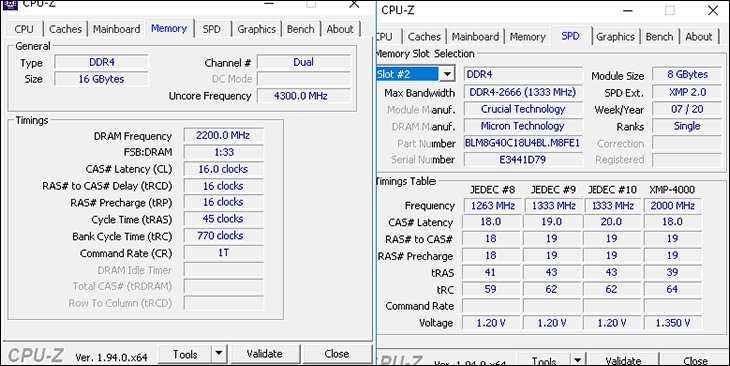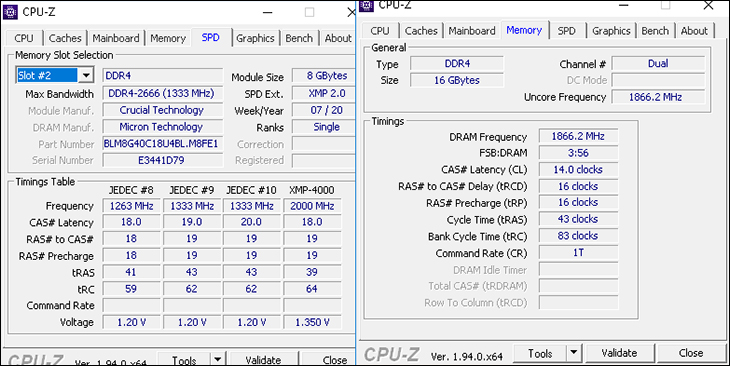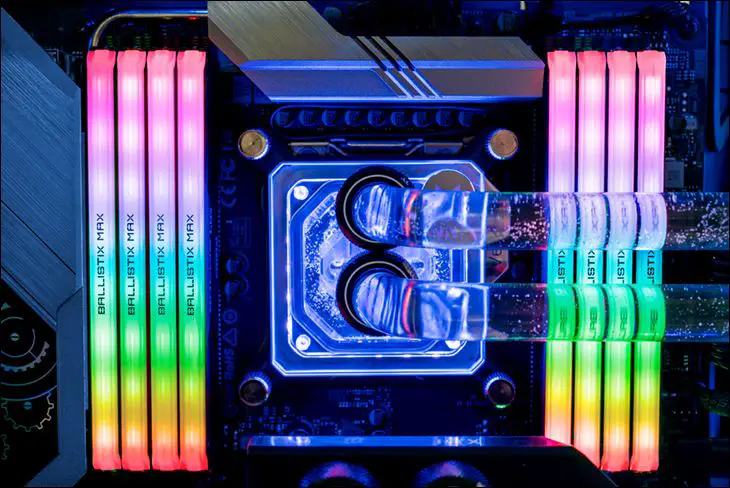
As we hinted in the closer look section judging this kit on its overclocking merits is… complicated. It is not a simple equation like “it does X at N prices versus the less expensive did Y at Z price point”. Instead, when dealing with uber-fast RAM kits it really… really will come down to what platform you plan on using.
With that caveat taken care of, since this kit is using higher quality/ higher binned variants of what Ballistix uses on their less expensive Gaming Memory 2x8GB line, it should come as no surprise that 400MHz over stock is a realistic… even conservative goal. With our kit DDR4-4400 at CL18 was a breeze. With a bit more voltage hitting DDR4-4400 at CL16 is eminently doable on both Intel and AMD systems. Dialing things in further to CL14 is also fairly straightforward if you want to push the voltage more than we are comfortable with. We did not as honestly there is no need.
We say this as Intel is just not as sensitive to minor changes in Latency like AMD processors and their IMCs do not like uber-high memory frequencies like AMD processors can routinely do. For example, at DDR4-4400 the difference between CL14 (6.36ns) and CL16 (7.27ns) is a mere 0.91ns. That is a big deal on AMD, on Intel… not so much. Maybe you will notice, maybe you will not. It really will depend on the application and what the bottleneck is.

Worse still, on AMD systems, anything above DDR4-3733ish (Ryzen 3000 series) or DDR4-4000 (Ryzen 5000-series… if they ever get 2000Mhz Infinity Fabric promises to work in the real world) means the Infinity Fabric speed is half the memory’s real frequency (i.e. half the rated RAM frequency as the ‘DDR’ in DDR4 stands for Double Data Rate)… sooo any differences in latency are lost in the noise of the Infinity Fabric bottleneck. Put bluntly, once you go above DDR4-3733/4000 you have to go way, way above just to get back some of the IF bus bandwidth lost by going above those ‘slower’ RAM speeds. For example, DDR4-4400 means the IF bus is running at a mere 1100Mhz (lower than DDR4-2333 kits!), DDR4-5100 is running at 1275Mhz (lower than DDR4-2600)… whereas at DDR4-3733 it is running at 1866.5Mhz and even ‘slow’ DDR4-3200 is running at 1600Mhz. Big difference. Big bottleneck.
So instead of focusing in maximum overclocking we opted for minimum latency at the fastest possible frequencies on the AMD side of things. That means DDR4-3733 on our Ryzen 3000 series processor. In testing, at 1.45v as our absolute maximum, hitting CL14 was fairly easy (albeit 14-16-16)… and why we hope AMD can get Ryzen 5000 to work with DDR4-4000 kits without the whole 2:1 gear ratio drama.
Overall, this is a classic case of memory manufactures out shinning CPU manufactures… and the MAX Gaming Memory being a victim of CPU manufacture’s not spending nearly as much time on their Integrated Memory Controller as they probably should. What. A. Shame.









